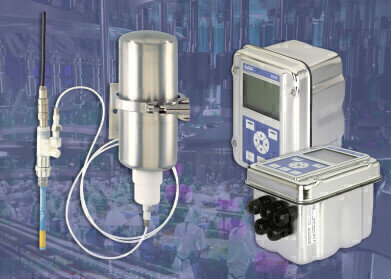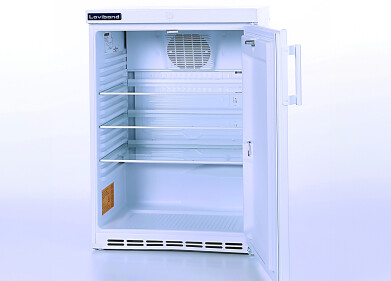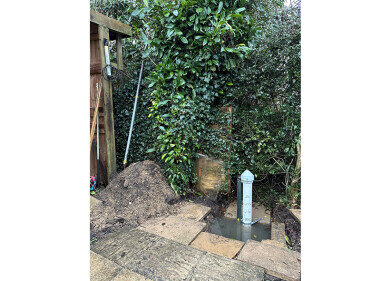Water/Wastewater
New ‘FIT-AND-FORGET’ METHOD OF ph SENSING ENABLES UNBREAKABLE SENSOR TO STAY IN PROCESS, EVEN DURING CIP & SIP PURIFICATION
Apr 24 2009
Stay- in- place pH sensing avoids contamination and cuts process time and cost by removing the requirements for sensor removal, cleaning and recalibration
Numerous processes within the pharmaceutical, food and beverage and chemical sectors require pH measurement and control. Monitoring of the pH of a material is important because it reduces product spoilage, ensures that optimum levels of yield are achieved, and enables the processor to meet legal requirements. As a result, any malfunction of a pH sensor can have serious consequences for the user, often causing complete product batches to be rendered useless. The life of pH sensors is not an easy one. In chemical processes they may have to withstand strong acidic or caustic solutions under high temperatures. Most pH measurement is carried out using glass electrode combinations, but glass is susceptible to chemical attack, and temperature changes can seriously affect electrode life with deterioration increasing with temperature. Consequently, electrode life is shortened when used in process solutions at elevated temperatures. As regards chemical attack, strong acids and strong alkaline solutions, in particular, assault the glass membranes of pH sensors; and even neutral solutions containing high concentrations of alkali ions, and sodium ions attack the glass. The ramification of this for the user is that specifying a pH sensor with a glass electrode or membrane inappropriate for the application may render the sensor inoperable after only a short period of time. The practice of protecting the glass membranes by removing the sensor from the solution when not in use also presents problems. The pH glass membrane will gradually dehydrate, which can affect its performance: the sensor will have slower response, and a higher than normal impedance when put back into operation. In addition, repeated or prolonged dehydration will dramatically reduce the life of the pH sensor. An additional problem with glass pH systems is that the reference electrode can become dehydrated, preventing proper operation. The electrolyte can leach out of the electrode cavity, through the junction(s), forming salt crystals on the junction surface. Over time, this will weaken the electrolyte potential and may cause a phenomenon known as a ’bridging effect’. Both these conditions will increase the output impedance, eventually causing it to rise to a level that renders the pH meter unusable. The inherent problems with glass pH systems, and their need for special care, have given rise to many methods of protecting and cleaning them in the process area. However, all these achieve is a situation where conventional pH measurement methods just about meet all user requirements for sterility, robustness, easy cleaning, high metering precision and reliability, at any one time. Recently, this situation has improved very much for the better, with the development of a new metering principle using pH sensors using an enamel layer instead of a glass membrane. Compared with conventional glass electrodes, enamel sensors offer a number of benefits: they are unbreakable, consequently, they are less susceptible to errors in production; they do not require removal for cleaning and recalibration; they are suitable for CIP and SIP, and can be cleaned with acid as well as basic solvents, in situ, and steam-sterilised. The basis of the new metering principle is an ionic sensitive enamel layer burned onto a stainless steel tube. The enamel layer provides an extremely smooth surface that resists media from sticking during measurement and this combines with a highly polished surface for the wetted parts and hygienic installation fittings, making the sensor system very easy to clean. Importantly during cleaning operations - and even, CIP/SIP purification, - the sensor stays in the process - and does not require recalibration. This saves both time and costs, and ensures sterility of the end product when changing batches. The fact that enamel sensors do not have to be removed or recalibrated also means that processes are not ‘opened up’ to the risks of germs or contamination. This feature contrasts with conventional pH sensors which have electrodes that cannot be used in the extreme CIP environment. They are usually removed via special automated armatures and cleaned separately with chemicals, before being recalibrated, if necessary. They have to be recalibrated only once or twice a year, and maintenance is limited to the approximately annual exchange of the electrolyte supply bottle, which is integrated into the enamel pH electrode and which acts as a reservoir for the reference electrode. Unlike many glass probes, which have electrolytes that dry out in air, the enamel pH sensor can be left dry for extended periods – as long as the user requires – without any drying out or loss of performance. Finally, one area where conventional glass pH sensors do have an advantage over enamel systems is the initial cost. However, the cost differential is easily overcome, based on savings in maintenance, replacement, reduced labour and mean time between failures. What is more, enamel pH sensors provide the key to improving process safety and quality of data. They are, indeed, a new way of looking at pH.Digital Edition
IET 34.2 March 2024
April 2024
Gas Detection - Biogas batch fermentation system for laboratory use with automatic gas analysis in real time Water/Wastewater - Upcycling sensors for sustainable nature management - Prist...
View all digital editions
Events
May 13 2024 Munich, Germany
May 15 2024 Lund, Sweden
May 15 2024 Frankurt-am-Main, Germany
May 20 2024 Columbus, OH, USA
May 21 2024 Lagos, Nigeria


















